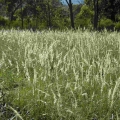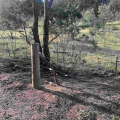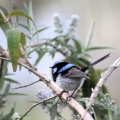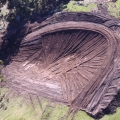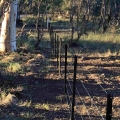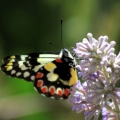eDNA results for Cudgegong River & Lawson Creek
Published 26th April 2024. Written by Maddison O’Brien
After much anticipation, eDNA results from the Great Australian Wildlife Search (GAWS) are in! Back in October 2023, the Central Tablelands Regional Landcare Network participated in the nationwide search for threatened species in our local waterways. Watershed Landcare took part by taking samples from 5 distinct locations along the Cudgegong River and Lawson Creek. Could we detect the Platypus?
At Creek Feast held on the 13th April along the banks of Lawson Creek, Maddison O’Brien from Watershed Landcare demonstrated how the eDNA samples were taken and revealed the species results to a group of keen observers. A syringe is filled with water from the target site and the water is then pushed through a ‘filter’ which catches sediment containing DNA. This is repeated until the filter is full and water can no longer be pushed through. This innovative technology can detect fragments of species recently interacting with the water. The samples are then sent off to Victoria to a special lab run by EnviroDNA who are pioneers in eDNA research.
After the eDNA test demonstration, it was time for the big moment. The results were handed out amongst the group, causing excitement and a flurry of questions. Among the data and list of species, a few results stood out. Platypus was detected in two separate locations in the Cudgegong River, an exciting discovery confirming local sightings. However, the search for the platypus continues in Lawson Creek, as it was not detected in this round of testing.
What pleasantly surprised us was the high numbers of Murray Cod DNA found at one location in Lawson Creek. Finding this vulnerable species indicates the relative health of Lawson Creek, with Murray Cod having specific water quality and habitat needs. Not surprising was the alarming amount of carp DNA detected across all locations.
River Blackfish is a local endangered fish that requires clean flowing water and lots of submerged logs and snags for breeding. It was exciting to find that this native fish was detected. Another win for Lawson Creek, which, based on eDNA results, has been proven to be an essential and viable habitat for native fish.
Along with aquatic species, some terrestrial species were detected, such as possums, swamp wallabies, grey-headed flying foxes, and aquatic birds like cormorants, wood ducks and dusky moorhens. The full results are available to download here.
This unique opportunity to participate in the Great Australian Wildlife search, supported by the Odonata Foundation, has been insightful and informative about our vibrant biodiversity and waterway health. We can use this data to inform future projects and conservation activities.



